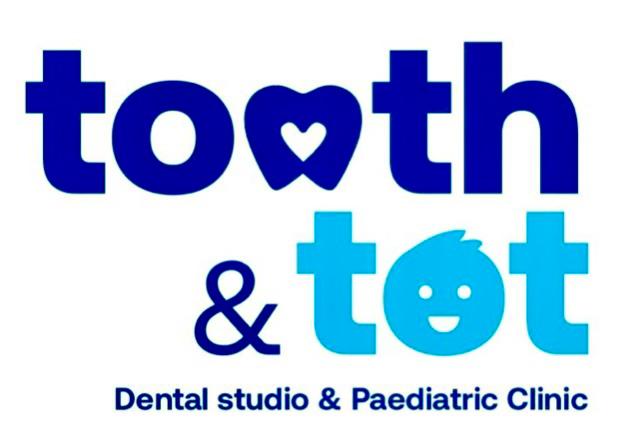+918042781795

This is your website preview.
Currently it only shows your basic business info. Start adding relevant business details such as description, images and products or services to gain your customers attention by using Boost 360 android app / iOS App / web portal.
Description
Speech therapy sessions for children are an essential part of helping children overcome challenges related to speech, language, and communication. These sessions are designed to improve the child’s ability to express themselves, understand language, and communicate effectively in everyday situations. Speech therapy can be beneficial for children with a wide range of conditions, including speech delays, language disorders, stuttering, articulation issues, and speech impairments due to conditions like autism, cerebral palsy, or hearing loss. Key Goals of Speech Therapy for Children: Speech Development: Help the child articulate sounds and words more clearly. Language Skills: Improve understanding and use of language, including vocabulary, grammar, and sentence structure. Communication Skills: Strengthen both verbal and non-verbal communication, such as body language and facial expressions. Social Communication: Enhance the child’s ability to interact socially with peers, family, and adults. Fluency and Stuttering: Help children manage stuttering and enhance their ability to speak fluently. Feeding and Swallowing: Address difficulties related to feeding, chewing, and swallowing. Common Conditions Treated in Speech Therapy: Speech Sound Disorders: Difficulty pronouncing words, such as replacing sounds (e.g., saying “wabbit” instead of “rabbit”). Language Disorders: Difficulty understanding and using spoken language (e.g., problems with sentence structure, vocabulary, or understanding complex instructions). Articulation Disorders: Difficulty producing specific sounds correctly. Stuttering (Fluency Disorders): Interruption of normal speech flow, causing hesitation, repetition of sounds, or long pauses. Apraxia of Speech: A motor speech disorder where the child has difficulty planning and coordinating the movements needed for speech. Voice Disorders: Issues with pitch, volume, or quality of the voice, such as hoarseness or loss of voice. Hearing Impairment: Children with hearing loss may require speech therapy to help them develop communication skills, especially if they have cochlear implants or hearing aids. Structure of a Speech Therapy Session The specific structure of a speech therapy session will depend on the child’s individual needs, the nature of their condition, and their age. However, the general flow of a session includes a combination of assessment, therapeutic activities, and play-based techniques. 1. Assessment (Initial Sessions) Comprehensive Evaluation: During the first session (or several sessions), the speech therapist will conduct a thorough assessment, which includes: Case history: Information about the child's developmental milestones, medical history, family history, and any concerns. Standardized assessments: Tools to assess speech and language skills (e.g., expressive language, receptive language, articulation). Observations: The therapist will observe the child’s communication abilities in different contexts (e.g., speaking with family, during play). Parent/Caregiver Input: Gathering input from the parents and caregivers about the child’s communication challenges and goals. 2. Setting Goals Based on the assessment, the therapist will set short-term and long-term goals for the child. These goals may focus on: Improving speech clarity (e.g., articulating certain sounds correctly). Enhancing vocabulary and language understanding (e.g., following multi-step instructions). Building social communication skills (e.g., making eye contact, taking turns in conversation). Reducing stuttering and improving fluency. Addressing any concerns related to voice or feeding/swallowing. 3. Therapy Techniques The therapist will employ a variety of techniques and activities designed to target the child’s specific challenges. Some examples include: Articulation Therapy: Sound production: Using visual and tactile cues to teach the correct placement of the tongue and lips. Repetition: Encouraging the child to repeat sounds or words multiple times to help solidify sound production. Minimal pairs: Using words that differ by only one sound (e.g., "bat" and "pat") to teach correct articulation. Language Therapy: Expanding vocabulary: Using flashcards, storytelling, and games to help the child learn new words. Sentence structure: Encouraging the child to use more complex sentences by expanding on simple phrases (e.g., "I see the dog" becomes "I see the big brown dog"). Following directions: Using simple and progressively more complex directions to help the child understand and process language. Fluency Therapy (Stuttering): Slow speech: Encouraging the child to speak slowly and deliberately to help with stuttering. Relaxation techniques: Teaching techniques to reduce anxiety around speaking, such as breathing exercises. Easy onset of speech: Encouraging the child to begin speech in a relaxed manner, making it easier to speak fluently. Social Communication: Role-playing: Engaging the child in social scenarios to practice taking turns in conversation, using appropriate greetings, and responding to questions. Non-verbal communication: Focusing on body language, gestures, and facial expressions as part of overall communication skills. Pragmatic language skills: Working on how to use language effectively in social situations (e.g., making requests, apologizing, or negotiating). Feeding and Swallowing Therapy: Oral motor exercises: Strengthening muscles in the mouth and face to improve chewing and swallowing. Textures and consistency: Working with different food textures to ensure the child can handle solid and semi-solid foods safely. Swallowing techniques: Teaching strategies to help with safe swallowing (e.g., chin tuck, slow swallowing). 4. Parent/Caregiver Involvement In speech therapy, especially with younger children, parent and caregiver involvement is crucial. The therapist may: Teach parents strategies to use at home, such as reinforcing good speech practices or helping the child with their homework. Provide exercises and activities for parents to practice with the child outside of therapy sessions. Offer guidance on how to create a supportive and language-rich environment to encourage communication development. 5. Monitoring Progress Throughout the course of therapy, the speech therapist will regularly monitor the child’s progress toward their goals. This may involve: Re-assessing the child’s skills using standardized tests. Adjusting goals and therapy techniques based on the child’s progress. Providing feedback to parents about improvements and areas where more attention is needed. Typical Speech Therapy Activities Games and Play-based Activities: Flashcards to build vocabulary. Interactive apps or software designed to teach language concepts. Role-playing games for practicing social communication skills. Storytelling and reading to help with language comprehension and narrative skills. Song and rhymes to improve memory and articulation. Visual and Tactile Cues: Mirror exercises to help children see and mimic the correct way to produce sounds. Hand gestures or using physical cues (e.g., tapping the child’s throat to show where sound is produced). Illustrated charts to demonstrate the placement of the tongue or lips for sound production. Frequency of Speech Therapy Sessions The frequency of speech therapy sessions depends on the child’s specific needs, but typically ranges from one to three sessions per week. Younger children or children with more significant speech delays may require more frequent sessions. Sessions may last from 30 minutes to an hour, depending on the child’s age and attention span. How to Know if Your Child Needs Speech Therapy Some signs that a child may benefit from speech therapy include: Speech delay: If the child is not meeting speech milestones (e.g., not speaking in full sentences by age 3). Articulation issues: Difficulty pronouncing words clearly or consistently. Receptive or expressive language difficulties: Trouble understanding or expressing themselves, even with simple words or phrases. Stuttering or fluency issues: Repeated sounds, syllables, or pauses in speech that disrupt fluency. Social communication challenges: Difficulty engaging in conversations or understanding social cues. Conclusion Speech therapy for children is a highly individualized process aimed at helping the child develop the skills necessary for effective communication. Whether it’s improving speech articulation, enhancing language comprehension, or working on social communication, speech therapy sessions provide valuable support for children facing challenges. Early intervention and consistent therapy can lead to significant improvements in the child’s ability to communicate, interact with others, and succeed in academic and social settings.

